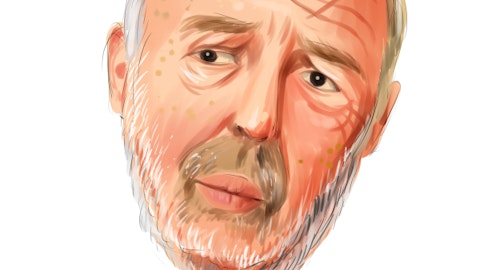Brandon Folkes : Congratulations on the progress. Maybe just one from me. Can we just take a step back on OLINVYK and think about this? Obviously, you continue to generate pretty good data on the product. It’s obviously tough to get — it’s a tough space to be selling a product. But what do you think sort of is the hurdle as we move forward here to maybe sort of getting people to switch across to OLINVYK? Is it just continued generation of data? Why is sort of the data that lies ahead or we have in hand potentially sort of more impactful than the data we’ve had in the past. Just any feedback from the field that you think sort of could actually drive revenue pull-through as we go forward?
Carrie Bourdow : Brandon, it’s a great question. I’ll start, and then I’ll have Patty dive in as well. So the couple of things. As you said, we’ve had — we put some data out, right, the head-to-head data that we previously. I will say those data sets while they’ve been generally supportive and they’ve been part of the discussions we’re having with formulary committees, they’ve been smaller data sets and healthy volunteers. This new data set is really what we’ve been hearing from our customers that they’ve been looking for it, right, real-world data in patients, robust from large academic medical centers, the added benefit then of having the electronic medical record process data around length of stay also helps that discussion.
So we’re directly answering the question that we’ve had, frankly, since launch. Where is the real-world data? Can you show us how this might impact or benefit the cost system? I will also say, though, that the inpatient setting is struggling, right? Margins are tight. We’re still seeing hospital formulary delays. And with the focus on costs, they’re very comfortable using IV morphine, IV hydromorphone. So it’s going to take something like this data set to really think breakdown some of those barriers. And you hear what Patty is describing is, we’re still trying to drive experience. And the fastest way for us to do that is in the ambulatory surgery centers, because hospitals are still experiencing delay. So it’s not — we’re not where we’d like to be.
We’re doing everything we can to sort of get things moving. It’s not necessarily additional data beyond this big data set because, as Mark said, we’re still going to be collecting data from this data set because we are also managing our expenses and looking to 045 in the pipeline. But Patty, I don’t know what are you seeing in the field?
Patty Drake: You said it very well. The inpatient setting is extremely difficult because of residual effects of the pandemic. ASCs represent an opportunity for us because of the reasons I listed with the more complex surgeries happening. It’s a growing area of health care in general. We have access to those people and they can get experience that they can parlay them into a hospital setting. What I’m most excited about in terms of the data that Mark has been able to generate with the team is exactly what you’re talking about length of stays in area that’s of critical importance to the inpatient setting and having such definitive data coming out is important. Now it’s going to take some time because we have to let medical do what they do first.
And that is that this data needs to get into our dossier. We’re going to be presenting it at congresses, published, et cetera. It takes time before it comes into the commercial hands for active promotion, but we’re certainly looking forward to having that happen, and we’ll certainly pursue that aggressively.
Brandon Folkes : And a follow-up on that, if I may. Do you expect the hospitals or ASC systems to want to run their own experience trials right on the back of this data as well would expect this data to sort of be sufficient out there given its real-world data to actually drive sort of use?
Carrie Bourdow : Yes. I’m pointing to Mark because he’s had — we — this data, as you can imagine, is fresh off the press. But you’ve had some conversations — yes.
Mark Demitrack : We’ve had conversations with providers from time to time about an interest in observing a cohort of patients in their hands as they use OLINVYK. We have not had any formal data output from those conversations at this point. I do think that the data we have is different than what we’ve had in our Phase III studies that we’ve presented and talked with providers about in that. This is actual real-world experience and use of the product. The idea of extracting the information from directly from an institution’s medical record and analyzing it that way is a fundamentally different type of information. And I think providers recognize that. So while certainly personal experience is pretty compelling for any clinician, the ability to look at data like this is, I think, an important incremental step in the type of data and the quality of the data that we’re providing to providers.





